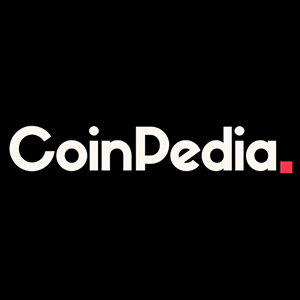VanEck Mid-June Bitcoin ChainCheck
10 min read
Summary Bitcoin set new all-time highs above $110K, though geopolitical tension briefly pushed BTC as low as $98K on June 22nd, marking a six-week low. Metaplanet’s +125% rally highlights recent investor preference for balance sheet BTC exposure over operational mining models, though leadership could shift with some valuations looking stretched. While future conditions remain uncertain, Bitcoin’s evolving role as both a high-beta tech proxy and a macro hedge may allow it to benefit across multiple scenarios. A major factor behind Bitcoin’s weaker on-chain metrics is the collapse in activity related to Ordinals, which allowed users to inscribe digital content onto individual Satoshis— effectively enabling Bitcoin-native NFTs. Bitcoin sets new highs and holds strong above $100K as Ordinals fade and onchain activity slows. Equity markets reward treasury-heavy BTC proxies over operational miners. Please note that VanEck has exposure to bitcoin. Three key takeaways for mid-May to mid-June: Price Resilience in a Volatile Macro Backdrop: Bitcoin ((BTC)) set new all-time highs above $110K , though geopolitical tension briefly pushed BTC as low as $98K on June 22nd, marking a six-week low. Onchain Activity Slows: Transaction volume and fee revenue declined, with Ordinals volumes hitting year-to-date lows, highlighting Bitcoin’s growing reliance on off-chain adoption. Treasury Plays Outperform… for Now: Metaplanet’s ( MTPLF ) +125% rally highlights recent investor preference for balance sheet BTC exposure over operational mining models, though leadership could shift with some valuations looking stretched. Bitcoin ChainCheck Monthly Dashboard As of June 19th, 2025 30-day avg 30 day change (%) 1 365 day change (%) Last 30 days Percentile vs. all-time history (%) Bitcoin Price $106,612 7 57 100 Daily Active Addresses 743,777 -2 14 67 Daily New Addresses 307,442 -1 18 56 Daily Transactions 364,471 -8 -42 76 Daily Inscriptions 42,864 -39 63 33 Total Transfer Volume ((USD)) $64,418,735,945 -2 40 64 % Supply Active, last 180 days 24% -10 -6 33 % Supply Dormant for 3+ Years 45% -1 -3 92 Avg Fees ((USD)) $159,028.01 -7 -70 87 Avg Fees ((BTC)) 1.49090 -12 -80 69 Percent of BTC Addresses in profit 98% 2 3 95 Unrealized profit/loss ratio 0.56 2 1 79 Global Power Consumption (TWh) 175 5 50 100 Total Daily BTC Miner Revenues ((USD)) $48,728,898 7 42 96 Total Crypto Equities’ Market Cap * ((USD)) (MM) $232,311 15 76 97 Transfer volume from Miners to Exchanges ((USD)) $12,819,409 6 0 92 Bitcoin Dominance 63% 1 19 96 Bitcoin Futures Annualized Basis 7% 9 -42 47 Mining Difficulty ((T)) 125 3 49 100 * DAPP market cap as a proxy, as of June 19th, 2025 1 30 day change & 365 day change are relative to the 30-day avg, not absolute Regional Trading ($) MoM Change (%) YoY Change (%) Asia Hours Price Change MoM 2 3 US hours Price Change MoM 9 0 EU hours Price Change MoM 4 3 Source: Glassnode as of 6/19/2025. Past performance is no guarantee of future results. Not intended as a recommendation to buy or sell any securities named herein. Bitcoin’s Price Action Bitcoin (BTC-USD) Borrowing Rates are Near YTD Lows Despite All-Time High Prices Source: Glassnode as of 6/19/2025. Past performance is no guarantee of future results. Not intended as a recommendation to buy or sell any securities named herein. Bitcoin quietly carved new all-time highs this month, reaching nearly $112K on May 22 and trading above $110K again on June 9. Yet, in the wake of escalating U.S.-Iran tensions over the weekend, BTC briefly fell to ~$98K , its lowest level in over a month, before stabilizing back above $100K . Despite this volatility, 30-day moving averages remain elevated at ~$ 107K . Interestingly, borrowing rates have cooled to 7%, about 50% lower than at the start of 2025, indicating neutral market sentiment and increased stability. While future conditions remain uncertain, Bitcoin’s evolving role as both a high-beta tech proxy and a macro hedge may allow it to benefit across multiple scenarios. In peace, improved risk appetite could favor high-growth assets like BTC. In conflict, rising fiscal deficits and currency concerns may bolster the asset’s appeal among reserve-seeking investors. Bitcoin’s Market Cap Dominance Hit Multi-Year Highs in June Source: Glassnode as of 6/19/2025. Past performance is no guarantee of future results. Not intended as a recommendation to buy or sell any securities named herein. Bitcoin Dominance and Institutional Flows Bitcoin’s market dominance rose another 1% in June, setting a new 30-day moving average high for this cycle. This continued rise reflects Bitcoin’s strengthening role as the preferred crypto asset among institutional investors, even as altcoins remain largely trapped in speculative, retail-driven narratives. Since the 2021–2022 altcoin cycle, Bitcoin has reclaimed nearly all market share gains made by other crypto assets. The momentum in dominance supports the view that Bitcoin has matured into a digital store-of-value — functionally “digital gold”– for both public and private institutions. Unlike prior cycles, investors today can access leveraged BTC exposure through public equities. Strategy (MSTR), for example, offers deep liquidity and capital efficiency, while smaller entrants like Semler Scientific ( SMLR ) provide high-volatility trading opportunities. These structures appear to absorb speculative demand that might have previously flowed into altcoins. While ETH and SOL treasury strategies show early promise, Bitcoin continues to command the lion’s share of institutional flows, supported by its dominant liquidity, simple narrative, and macro positioning. Altcoins, by contrast, have struggled to attract sustained inflows, with market activity largely rotational and retail-driven. As a result, Bitcoin appears to be pulling in net new capital, while altcoins operate in a more insular environment, reinforcing BTC’s status as the foundation of institutional crypto exposure. Onchain Performance: Activity Slows as Offchain Adoption Grows Daily Bitcoin Transactions and Fees Hovered Near YTD Lows in June Source: Glassnode as of 6/19/2025. Past performance is no guarantee of future results. Not intended as a recommendation to buy or sell any securities named herein. While market-facing indicators such as price action, futures, flows, and institutional positioning remain supportive, Bitcoin’s on-chain metrics point to softening activity. Over the past 30 days: The Bitcoin network processed an average of 364,000 transactions per day, down 8% month-over-month and 42% year-over-year. Daily fee revenue averaged $641K , down 57% year-to-date. In contrast, block rewards earned by miners remain elevated at approximately $45M per day, assuming 144 blocks/day at $100K per BTC. This means that, on an annualized basis, transaction fees account for just 1.4% of the estimated $16.4B in yearly block rewards, a stark mismatch between network usage and price performance. This disconnect may persist, especially as Bitcoin adoption increasingly occurs offchain through financial products like ETPs and corporate treasuries, rather than through native blockchain activity. Looking ahead, the scheduled block reward halvings in 2028 and 2032 will further reduce miner revenue, raising structural questions about the long-term sustainability of security incentives if fee generation doesn’t materially recover. Ordinals (“Bitcoin NFTs”) Activity Fell To 2025 Lows in June Source: Glassnode as of 6/19/2025. Past performance is no guarantee of future results. Not intended as a recommendation to buy or sell any securities named herein. Ordinals Cool Off A major factor behind Bitcoin’s weaker on-chain metrics is the collapse in activity related to Ordinals, which allowed users to inscribe digital content onto individual Satoshis—effectively enabling Bitcoin-native NFTs. After launching in early 2023, Ordinals briefly revitalized Bitcoin’s base layer, bringing in unprecedented retail demand. Transaction volumes surged, fees spiked, and Bitcoin—which historically lacked the smart contract capabilities of chains like Ethereum ( ETH-USD ) and Solana ( SOL-USD )—saw renewed relevance as an application layer. From late 2023 through early 2024, Ordinals helped narrow the perceived gap between Bitcoin and more expressive chains by enabling digital collectibles, meme assets, and experimental DeFi primitives on BTC. But in June, activity collapsed: transaction volumes fell 39% month-over-month, marking new 2025 lows and the weakest performance since the latest wave of interest began in late 2024. The decline reflects both cooling speculative interest and structural challenges in sustaining high-fee on-chain activity. While the protocol was an important moment for Bitcoin’s cultural evolution, its volatility underscores the difficulty of building persistent user demand on a chain not optimized for programmability. Bitcoin Pure-Play Stocks Source: FactSet as of 6/19/2025. Past performance is no guarantee of future results. Not intended as a recommendation to buy or sell any securities named herein. Metaplanet (+125%) Metaplanet stood out as a top performer among Bitcoin pure-plays this month, up 125% MoM. The company announced three purchases of Bitcoin: On May 19th, June 2nd, and June 16th, Metaplanet acquired 1,004 , 1,088 , and 1,112 Bitcoin, respectively, bringing its total holdings to 10,000 BTC . The company also announced its 2025-2027 Bitcoin Plan, targeting 210,000 BTC by 2027. While we flag that Metaplanet’s NAV Premium to basic shares ( ~7.1x ) remains elevated compared to Strategy’s ( ~1.8x ) and Semler Scientific’s (~1.1x ), we recognize the company’s dominance as a Bitcoin treasury company in the Japanese and broader Asian markets, in addition to certain tax and regulatory advantages it offers over spot Bitcoin. Strategy (-11%) In late May, Strategy announced its latest Bitcoin acquisition, adding 4,020 to bring its total to 580,250 BTC . On June 6th, Strategy priced a $980M public offering of 10.00% Series A Perpetual Preferred Stock (‘STRD’), with proceeds earmarked for further Bitcoin acquisitions and general corporate purposes. The non-cumulative preferred shares, structured to pay quarterly cash dividends when declared, represent Strategy’s latest innovation in capital structure to scale BTC exposure without issuing common equity. While MSTR’s 1M performance was negative, we note that its YTD (+28%) performance still largely outpaces Bitcoin’s (+7%), and that its NAV premium suggests more downside protection than Metaplanet’s. CleanSpark (-7%) CleanSpark ( CLSK ) doubled its BTC treasury year-over-year, now holding 12,502 BTC . In May, it produced 694 BTC , selling only 293.5 . While CleanSpark holds more BTC than Metaplanet, its market cap is only one-third as large, suggesting either a steep discount on miners or a premium on treasuries. Notably, CleanSpark has avoided equity dilution since November 2024, a rare feat in the mining space, and continues to scale through localized energy strategies. Still, the market’s broader view on mining economics remains skeptical. Marathon Digital (-12%) Despite having the highest energized hash rate (58.3 EH/s) and the second-largest BTC treasury ( 49,179 BTC ), Marathon fell 12% MoM, underperforming other pure-plays. While the company has begun building out its own infrastructure, about 45% of its operational hashrate still comes from hosted arrangements, which can limit margins and strategic flexibility, especially when compared to fully integrated miners. Marathon’s past reliance on third-party hosting and its history of equity dilution continue to weigh on investor sentiment. That overhang could persist unless the company transitions more fully to a self-operated model or demonstrates progress in diversifying its revenue base beyond core mining. Links to third party websites are provided as a convenience and the inclusion of such links does not imply any endorsement, approval, investigation, verification or monitoring by us of any content or information contained within or accessible from the linked sites. By clicking on the link to a non-VanEck webpage, you acknowledge that you are entering a third-party website subject to its own terms and conditions. VanEck disclaims responsibility for content, legality of access or suitability of the third-party websites. Disclosures Coin Definitions Bitcoin ((BTC)) is a decentralized digital currency without a central bank or single administrator. It can be sent from user to user on the peer-to-peer Bitcoin network without intermediaries. Risk Considerations This is not an offer to buy or sell, or a recommendation to buy or sell any of the securities, financial instruments or digital assets mentioned herein. The information presented does not involve the rendering of personalized investment, financial, legal, tax advice, or any call to action. Certain statements contained herein may constitute projections, forecasts and other forward-looking statements, which do not reflect actual results, are for illustrative purposes only, are valid as of the date of this communication, and are subject to change without notice. Actual future performance of any assets or industries mentioned are unknown. Information provided by third party sources are believed to be reliable and have not been independently verified for accuracy or completeness and cannot be guaranteed. VanEck does not guarantee the accuracy of third party data. The information herein represents the opinion of the author(s), but not necessarily those of VanEck or its other employees. Index performance is not representative of fund performance. It is not possible to invest directly in an index. Investments in digital assets and Web3 companies are highly speculative and involve a high degree of risk. These risks include, but are not limited to: the technology is new and many of its uses may be untested; intense competition; slow adoption rates and the potential for product obsolescence; volatility and limited liquidity, including but not limited to, inability to liquidate a position; loss or destruction of key(s) to access accounts or the blockchain; reliance on digital wallets; reliance on unregulated markets and exchanges; reliance on the internet; cybersecurity risks; and the lack of regulation and the potential for new laws and regulation that may be difficult to predict. Moreover, the extent to which Web3 companies or digital assets utilize blockchain technology may vary, and it is possible that even widespread adoption of blockchain technology may not result in a material increase in the value of such companies or digital assets. Digital asset prices are highly volatile, and the value of digital assets, and Web3 companies, can rise or fall dramatically and quickly. If their value goes down, there’s no guarantee that it will rise again. As a result, there is a significant risk of loss of your entire principal investment. Digital assets are not generally backed or supported by any government or central bank and are not covered by FDIC or SIPC insurance. Accounts at digital asset custodians and exchanges are not protected by SPIC and are not FDIC insured. Furthermore, markets and exchanges for digital assets are not regulated with the same controls or customer protections available in traditional equity, option, futures, or foreign exchange investing. Digital assets include, but are not limited to, cryptocurrencies, tokens, NFTs, assets stored or created using blockchain technology, and other Web3 products. Web3 companies include but are not limited to, companies that involve the development, innovation, and/or utilization of blockchain, digital assets, or crypto technologies. All investing is subject to risk, including the possible loss of the money you invest. As with any investment strategy, there is no guarantee that investment objectives will be met and investors may lose money. Diversification does not ensure a profit or protect against a loss in a declining market. Past performance is no guarantee of future performance. © Van Eck Associates Corporatio Original Post Editor’s Note: The summary bullets for this article were chosen by Seeking Alpha editors.

Source: Seeking Alpha



